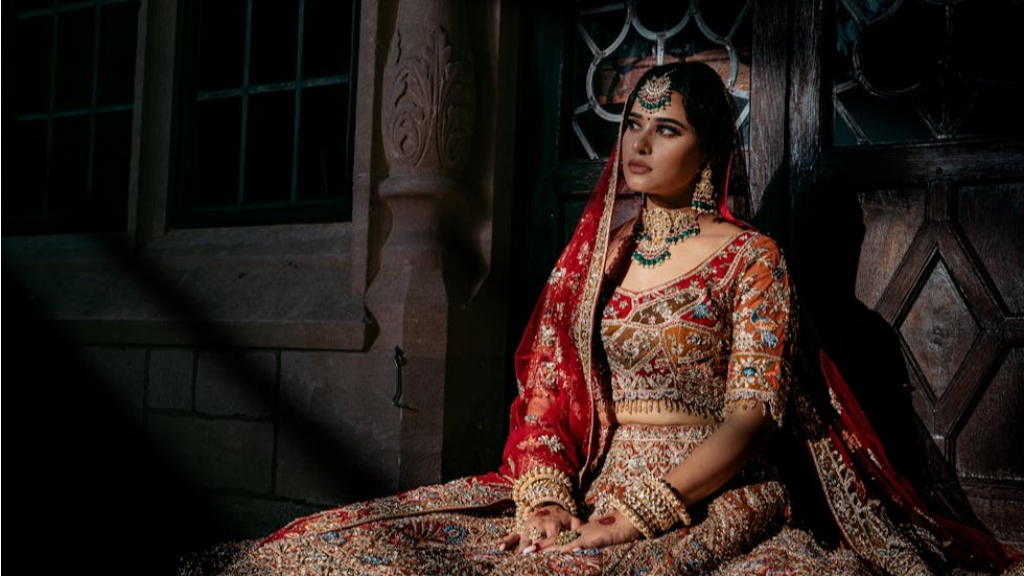North Indian fashion has undergone a fascinating transformation over the centuries, blending historical influences with contemporary trends. From the grandeur of Mughal-era clothing to the fusion of modern styles, this journey reflects not only changing aesthetics but also cultural heritage. Let’s explore the evolution of North Indian fashion and its impact on today’s trends.
Mughal Influence: The Era of Grandeur and Opulence
The Mughal Empire (1526–1857) played a significant role in shaping North Indian fashion. The Mughals introduced luxurious fabrics, intricate embroidery, and regal silhouettes that remain iconic to this day.
Royal Fabrics & Embroidery: Silk, brocade, and muslin were popular choices, often adorned with elaborate zari (gold and silver thread) work, zardozi, and gota patti embroidery.
Flowing Attire: The Anarkali suit, inspired by the legendary courtesan Anarkali, became a symbol of elegance with its long, flowing silhouette.
Influence on Men's Fashion: Mughal men embraced Jama (a long robe), churidar (fitted trousers), and turbans with intricate designs, reflecting their royal status.
Jewelry & Accessories: Heavy kundan, polki, and meenakari jewelry, along with elaborate headpieces like passa and matha patti, completed the royal look.
Colonial Era & British Influence (18th–20th Century)
During British rule, North Indian fashion saw a shift towards more structured and Westernized styles.
Sarees with Blouses: The concept of tailored blouses and petticoats for sarees became more widespread.
Simplified Menswear: The Mughal-style Jama gave way to simpler kurtas and sherwanis, often paired with Nehru jackets.
Fusion Styles: European-style fabrics and cuts influenced traditional attire, leading to Indo-Western fashion trends.
Post-Independence & Bollywood Impact (1950s–1990s)
With India’s independence in 1947, fashion saw a revival of traditional textiles and regional styles, largely influenced by Bollywood.
Rise of Bollywood-Inspired Fashion: Films played a crucial role in popularizing sarees, salwar kameez, and Anarkali suits with modern twists.
Chiffon & Georgette Revolution: The 1960s and 1970s introduced lightweight fabrics like chiffon, making sarees more manageable and stylish.
Bold Colors & Patterns: The disco era of the 1980s brought bright colors, sequins, and heavy embellishments into traditional wear.
Contemporary Trends: Blending Tradition with Modernity
Modern North Indian fashion is an amalgamation of historical influences and global trends.
Revival of Handlooms: Banarasi silk, Chikankari embroidery, and Phulkari work are making a comeback in bridal and casual wear.
Indo-Western Fusion: Anarkali gowns, palazzo suits, and crop-top lehengas combine traditional styles with modern aesthetics.
Minimalist Ethnic Wear: The trend of lightweight, pastel-colored lehengas and sarees reflects a shift towards subtle elegance.
Sustainable Fashion: With eco-consciousness on the rise, handwoven fabrics and organic dyes are gaining popularity.
Conclusion
The evolution of North Indian fashion beautifully captures the essence of cultural heritage and modern adaptability. From Mughal opulence to minimalist contemporary designs, each era has contributed to the rich tapestry of Indian fashion. As trends continue to evolve, North Indian attire remains a timeless blend of history and innovation, proving that fashion is not just about clothing but a reflection of identity and tradition.




Share this via
Or copy link